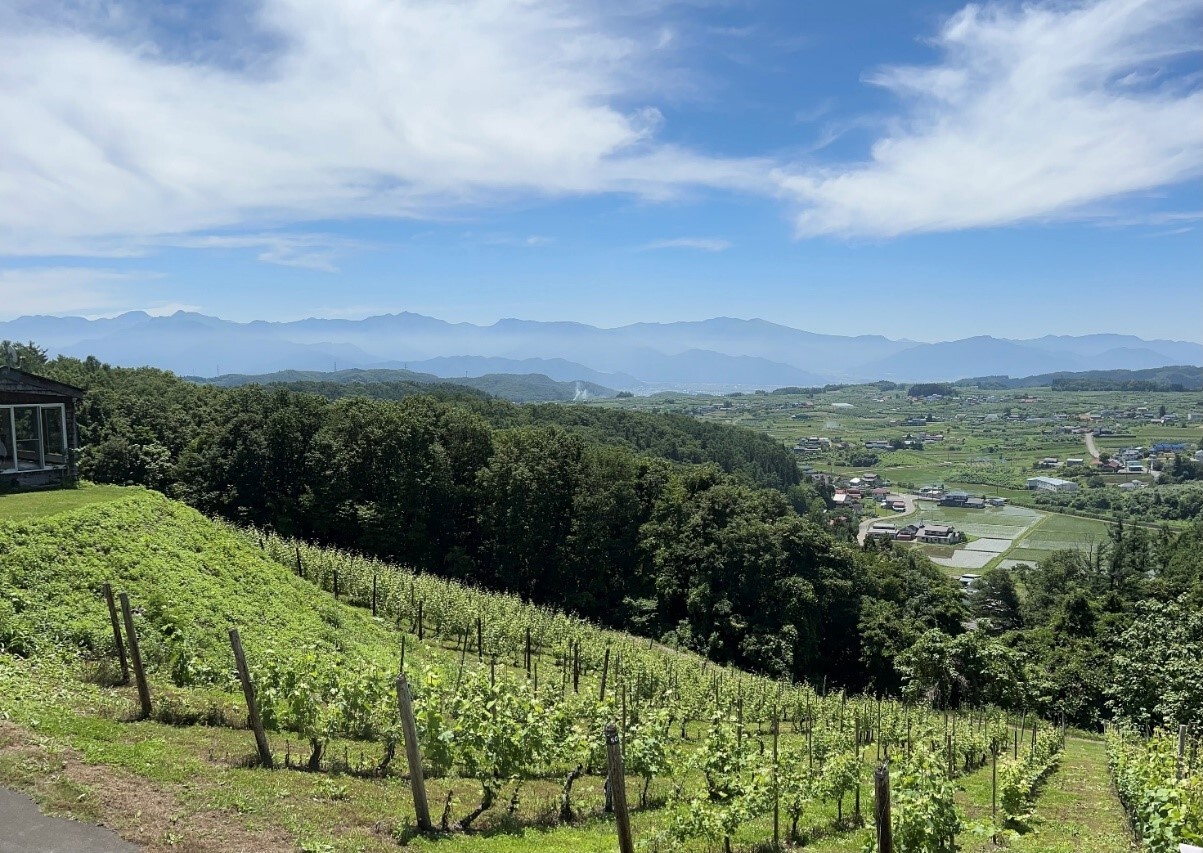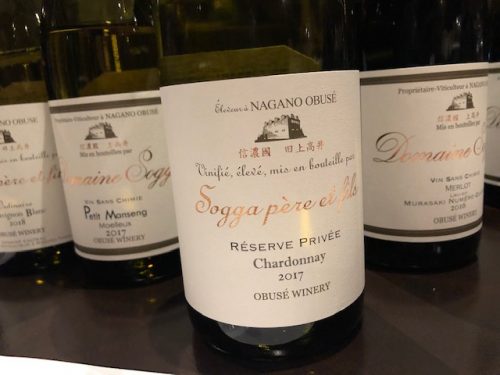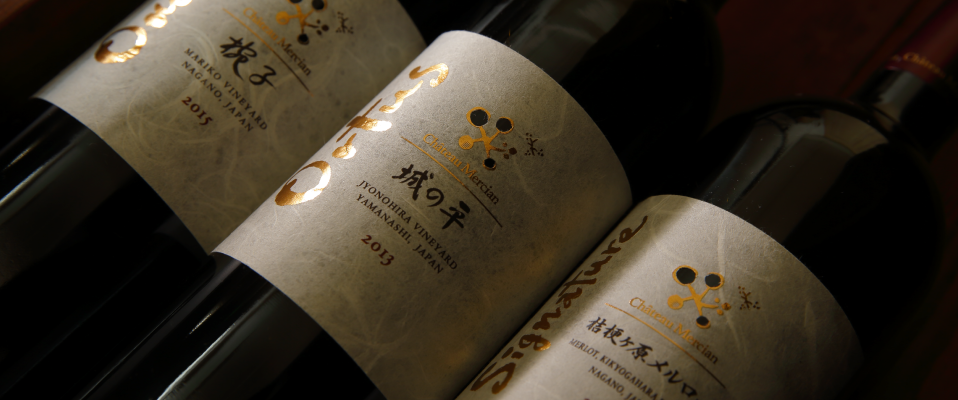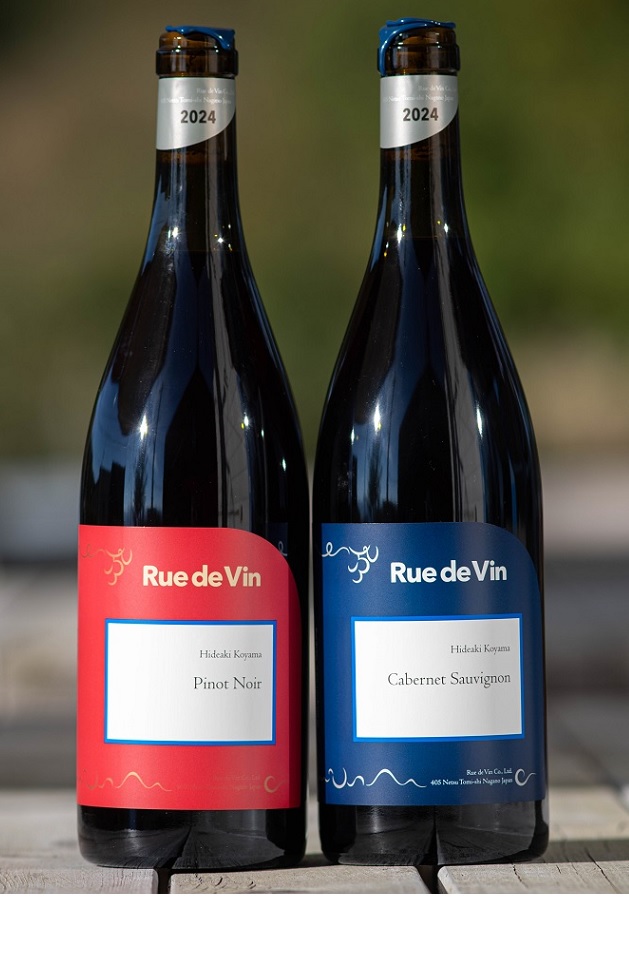The Complete Guide to Nagano's Five Wine Valleys: Japan's Alpine Wine Heartland
Discover Nagano's five distinct wine valleys—Chikumagawa, Kikyogahara, Nihon Alps, Tenryugawa, and Yatsugatake—each offering unique terroir and exceptional wines from Japan's most diverse wine region.

Nagano Prefecture stands as Japan's second-largest wine-producing region, home to over 80 wineries crafting exceptional wines across five distinct alpine valleys. Known collectively as the "Shinshu Wine Valley," this mountainous region between Tokyo and the Japan Alps has quietly established itself as the country's most diverse and sophisticated wine landscape.
While Hokkaido captures attention for its cool-climate Pinot Noir, Nagano's strength lies in its terroir diversity. The current five-valley classification—Chikumagawa, Kikyogahara, Nihon Alps, Tenryugawa, and Yatsugatake—was only formally established in 2023, with Yatsugatake added as the fifth distinct valley to the previously recognized four subregions. These valleys offer distinct soil compositions, microclimates and elevations ranging from 400 to 1,000 meters, enabling winemakers to excel with different grape varieties. The result is Japan's largest production of both Merlot and Chardonnay, alongside innovative expressions of international varieties adapted to Japan's continental climate.
Cool temperatures, dramatic day-night temperature swings, and pristine mountain environment create ideal conditions for slow grape maturation and complex flavor development. Volcanic ash soils, alluvial fans, and mountain slopes provide excellent drainage — a critical factor that distinguishes Nagano's terroir from Japan's more humid wine regions. This combination of altitude, geology, and climate attracts both established producers like Château Mercian and innovative boutique winemakers.
Table of Contents
- Nagano Wine Valleys Quick Comparison
- Quick Reference Guide
- The Five Wine Valleys
- Planning Your Visit
- Frequently Asked Questions
Nagano Wine Valleys Quick Comparison
| Valley | Elevation | Signature Grapes | Character |
|---|---|---|---|
| Chikumagawa | 400-800m | Merlot, Chardonnay, Syrah | Diverse, experimental |
| Kikyogahara | 500-700m | Merlot, Niagara | Historic, beginner-friendly |
| Nihon Alps | 500-800m | Chardonnay, Pinot Noir | Mineral-driven, elegant |
| Tenryugawa | 400-600m | Koshu, Muscat Bailey A | Warm-climate, approachable |
| Yatsugatake | 800-1000m | Chardonnay, Merlot | Volcanic terroir, artisanal |
Quick Reference Guide
🚗 Getting There
- From Tokyo: JR Hokuriku Shinkansen to Nagano (1.5 hours) + local transport
- Car Rental: Recommended for valley hopping and boutique wineries
- Distance Between Valleys: 30-60 minutes driving
📅 Best Visit Times
- Harvest Season: September-October (book 1+ week ahead)
- Ideal Weather: April-August for vineyard exploration
- Winter: Limited to lower altitude wineries (snow access issues)
💡 Pro Tips
- Reservations: Contact boutique wineries 2-3 days ahead
- Language: Basic English at major wineries, Japanese helpful for smaller producers
The Five Wine Valleys
Chikumagawa Wine Valley: The Pioneer's Playground
The Chikumagawa Wine Valley is Nagano's largest and most diverse wine region. Named for the Chikuma River, it stretches from Nagano city through the Ueda and Saku basins. The valley has the widest range of elevations and soil types, creating distinct terroir pockets.
The valley's foundation rests on alluvial fan soils deposited over millennia by mountain streams, creating the excellent drainage essential for quality viticulture. These well-drained soils, combined with the valley's diverse altitudes, allow winemakers to cultivate everything from Bordeaux varieties to Burgundian grapes, each finding its optimal expression at different elevations and exposures.
Domaine Sogga (Obuse Winery) leads as the valley's most internationally acclaimed producer. Akihiko Soga's minimal intervention approach and terroir-focused techniques produce wines praised for their "vivid acidity, purity of fruit, and refined structure." His co-planted Merlot-Tannat blocks exemplify innovative Japanese winemaking.
 Domaine Sogga (Obuse Winery) showcases minimal intervention winemaking in Chikumagawa Valley
Domaine Sogga (Obuse Winery) showcases minimal intervention winemaking in Chikumagawa Valley
The valley's signature varieties include Merlot and Chardonnay, but innsome producers are experimenting with Cabernet Sauvignon, Cabernet Franc, Pinot Noir, and Sauvignon Blanc, Syrah and Gamay. The cool, high-altitude sites enable slow ripening that develops complex flavors while preserving the bright acidity that defines the best Japanese wines.
Other notable producers include Villa d'Est (education-focused), St. Cousair (Iizuna Town, wine tourism destination), Komoro Winery (Manns Wines, largest site with old-vine plantings), Takayashiro Farm (small-batch Syrah and Pinot Noir), Funky Chateau and Terre de Ciel (acclaimed boutique producers), and Cantina Riezo (innovative since 2015).
The Chikumagawa Valley's strength lies not in a single signature style, but in its ability to support diverse expressions of Japanese terroir, making it both a laboratory for innovation and a showcase for the breadth of possibilities in Japanese winemaking.
Kikyogahara: The Historic Heart of Japanese Merlot
Centered in Shiojiri city, the Kikyogahara wine region is both Nagano's oldest wine area and the birthplace of Japanese Merlot excellence. Situated on gently sloping fluvial terraces formed by the Narai River, the valley has spent over 70 years perfecting the cultivation of Merlot in Japan's climate.
The region's terroir foundation consists of volcanic ash soils deposited on well-drained gravelly terraces, providing both the drainage essential for healthy vines and the mineral complexity that distinguishes Kikyogahara Merlot from international expressions. The moderate continental climate, characterized by significant diurnal temperature variation, allows grapes to ripen fully while maintaining the fresh acidity that makes these wines particularly food-friendly.
Merlot's history in Kikyogahara began in the early 1950s through the pioneering efforts of Goichi Hayashi, whose family's Goichi Winery (founded 1911) first introduced the variety. However, larger-scale adoption occurred after 1976, when Daikoku Budoushu (now Mercian) mobilized local growers to switch from Labrusca grapes to Merlot plantings. While Merlot was present from the 1950s, it took over a decade for vines to mature and yield high-quality fruit. The breakthrough came with the celebrated "Shinshu Kikyogahara Merlot 1985," which won the Grand Gold at the Ljubljana International Wine Competition in 1989, establishing Japanese Merlot's international credibility.
Izutsu Winery (founded 1933) is the region's largest producer with 19 hectares and 800,000 bottles annually. Their unoaked Merlot emphasizes freshness and natural cherry-raspberry character, reflecting Kikyogahara's philosophy of balance over power.
Château Mercian's flagship Kikyogahara District Merlot continues this tradition, producing complex, age-worthy wines that showcase how volcanic ash soils and mountain climate create Merlot expressions impossible to replicate elsewhere.
 Château Mercian's flagship Kikyogahara District Merlot from volcanic ash terraces
Château Mercian's flagship Kikyogahara District Merlot from volcanic ash terraces
Hayashi Farm (Hayashiwain) maintains the valley's Merlot heritage alongside historic Niagara, Concord, and Ryugan varieties. Vino Della Gatta and Sun Sun Estate represent new expansion along the Narai River.
Kikyogahara Merlot is characterized by its balance, approachability and smooth tannins. Its bright fruit character and natural acidity pairs exceptionally well with Japanese cuisine. While Merlot is central to the valley's identity, the region has its fair share of Niagara and Concord as well as Ryugan (a signature indigenous Nagano grape). However, Merlot remains the signature achievement that established Japanese wine's international reputation and continues to influence Merlot production throughout Japan.
Nihon Alps Wine Valley: Where Mountains Meet Precision
The Nihon Alps Wine Valley sits in the shadow of Japan's Northern Alps between 500 to 800 meters above sea level. Concentrated around the Azumino Basin, the region produces some of Japan's most mineral-driven and elegant wines.
The high altitude introduces cool temperatures and extended daylight hours during the growing season, promoting slow ripening to create a natural acidity with aromatic complexity. A combination of volcanic soils and gravel deposits with excellent drainage contributes to distinctive mineral characteristics that winemakers describe as the "taste of mountain air."
Chardonnay thrives in this alpine environment, producing wines with richness and complexity that rival international cool-climate expressions. The extended growing season allows for full phenolic ripeness while maintaining the crisp acidity essential for age-worthy whites. Pinot Noir also excels here, though in a distinctly Japanese style—lighter, more savory expressions that emphasize elegance over power, often compared to Loire Valley Pinot Noir for their finesse and food-pairing versatility. Pinot Gris and Yama Sauvignon are gaining attention as experimental varieties particularly suited to the changing climate and high-altitude conditions.
Northern Alps Vineyards (Omachi) serves as the region's flagship, focusing on Chardonnay and Pinot Noir with experimental Pinot Gris blocks. Their wines showcase how altitude creates distinct mountain character.
Azumino Winery expresses pure mountain terroir from multiple high-altitude sites in the Azumino Basin. Yamabe Winery focuses on mountain-climate Chardonnay and Merlot, Hitakihara Winery produces award-winning blends, Yone Farm specializes in Cabernet Franc, and Koaso Vineyard adds to the high-altitude diversity.
The Yamabe district within this valley holds special significance as the birthplace of Nagano's viticulture, where early experiments in the 1950s proved that European varieties could succeed in Japan's mountain environment. This historical foundation continues to influence the region's focus on traditional varieties adapted to extreme alpine conditions.
The Nihon Alps Valley's wines are distinguished by their freshness, mineral precision, and ability to express the unique character of high-altitude Japanese terroir—qualities that continue attracting international attention as Japanese wine gains global recognition.
Tenryugawa Wine Valley: The Innovation Frontier
Located in southern Nagano along the Tenryu River, the Tenryugawa Wine Valley is the region's warmest valley, allowing for grape varieties and wine styles unavailable in cooler northern sites. Surrounded by the Central and Southern Alps, this river valley benefits from the moderating influence of the Tenryu River while maintaining the altitude necessary for quality wine production.
While still cool by international stndards, the valley's warmer microclimate enables longer growing seasons and more complete ripening for varieties that struggle in Nagano's higher, cooler valleys. This has encouraged experimentation with Japanese wild grapes and hybrid varieties alongside international grapes.
The terroir foundation consists of river terraces with diverse soil compositions, from alluvial deposits near the river to rocky, mineral-rich soils on higher slopes. Combined with varied exposures and the river's moderating infuluence, there are multiple distinct microclimates within a relatively compact area. Winemakers have learned to match specific grape varieties to individual sites, maximizing each location's potential.
The valley's primary varieties include Koshu, Muscat Bailey A, Pinot Noir, and Cabernet Franc, noted for producing softer tannins and ripe fruit-forward styles. Reds often show more concentrated fruit character and softer tannins, while whites display tropical and stone fruit notes alongside the bright acidity that characterizes all Nagano wines. This warmer-climate character makes Tenryugawa wines particularly approachable and food-friendly.
The valley's innovation extends beyond grape varieties to winemaking techniques. Local producers have embraced both traditional Japanese fermentation methods and modern international techniques, often combining approaches to create distinctly Japanese wine styles. This experimental spirit, supported by the valley's more forgiving climate, has produced unique wines that wouldn't exist in either cooler Japanese regions or warmer international climates.
Tenryu Winery and Kikyougahara Wine Company focus on warm-climate and hybrid varieties, while Nakajima Vineyard and AO Vineyard specialize in Cabernet Franc and Muscat Bailey A. These boutique producers develop varieties suited to warmer conditions, contributing to Japanese wine innovation.
The Tenryugawa Valley's role as Nagano's innovation frontier continues evolving as climate change affects wine regions globally, positioning these warmer-climate techniques and varieties as increasingly relevant for Japanese wine's future development.
Yatsugatake: Volcanic Terroir at Altitude
The Yatsugatake wine region, situated on the volcanic plateau extending from the base of the Yatsugatake Mountains, represents Nagano's highest and most geologically distinctive wine valley. With vineyards planted between 800 and 1,000 meters above sea level on volcanic soils, this region produces some of Japan's most mineral-driven and terroir-specific wines through a combination of extreme altitude and unique geological conditions.
The volcanic soils that define this region originated from ancient eruptions of the Yatsugatake volcanic group, imparting distinctive character to wines produced here. These volcanic soils, combined with the high altitude and its accompanying cool nights and long growing season, preserve natural acidity while developing complex mineral flavors impossible to achieve at lower elevations.
In Yatsugatake, cool nights preserve acidity and aromatic compounds, while intense mountain sunlight during the day promotes photosynthesis and flavor development. The significant diurnal temperature variation—often exceeding 20 degrees Celsius between day and night temperatures—allows grapes to maintain freshness while achieving full phenolic ripeness.
Rue de Vin (Ueda) exemplifies artisanal winemaking through small vineyard plots with over ten varieties including Chardonnay, Sauvignon Blanc, Merlot, and Gewürztraminer. Their stainless steel approach preserves volcanic terroir expression.
 Rue de Vin exemplifies artisanal winemaking on volcanic terroir in Yatsugatake
Rue de Vin exemplifies artisanal winemaking on volcanic terroir in Yatsugatake
Kusunoki Winery (founded 2011) represents new-generation Japanese winemaking, focusing on Chardonnay and Merlot with minimal intervention techniques. His 2014 Chardonnay was selected for the G7 meeting. Yatsugatake Winery offers guesthouse-style experiences, Kusunori produces acclaimed Pinot Noir, and Yone Farm contributes Cabernet Franc.
Yatsugatake wines are distinguished by their pronounced minerality, bright acidity, and complex flavor development that reflects both the volcanic soil influence and extreme altitude. Chardonnay from this region often shows stony, mineral characteristics alongside precise fruit flavors, while Merlot develops unique spice and earth notes rarely found in the variety elsewhere in Japan.
The region's boutique scale—with most producers focusing on small-batch, artisanal production—allows for intensive attention to detail and experimentation with techniques that express this unique terroir. This combination of challenging growing conditions, distinctive volcanic soils, and dedicated artisanal producers makes Yatsugatake wines among Japan's most distinctive and terroir-specific expressions.
Planning Your Visit
Nagano's five wine valleys offer different experiences depending on your interests, timeline, and seasonal preferences. While most valleys are accessible within 2-3 hours from Tokyo, multi-day visits allow deeper exploration of the region's diverse terroir and winery styles.
Timing significantly affects the valley experience. April through October provides full winery operations and optimal weather for vineyard visits. September and October offer harvest season experiences, with grape-picking opportunities and the chance to observe winemaking in progress, though advance booking is essential during this busy period. Winter visits are possible but limited to lower altitude wineries, as snow restricts access to higher vineyard sites.
Transportation planning is crucial for efficient valley exploration. Car rental provides the greatest flexibility for visiting multiple valleys and smaller boutique wineries. Public transportation serves major wineries in valleys near rail lines, but many artisanal producers require private transportation for access.
Reservation requirements vary significantly by producer. Large established wineries like Château Mercian and Izutsu often accept walk-in visitors, while boutique producers such as Domaine Sogga, Kusunoki Winery, and Rue de Vin typically require advance appointments. Regardless, we strongly suggest contacting wineries directly 2-3 days before visiting, especially during harvest season.
For more comprehensive visits, we suggest focusing on 1-2 valleys per day. Chikumagawa Valley's size requires a full day for adequate exploration, while smaller valleys like Yatsugatake can be combined with adjacent regions. Kikyogahara's concentration around Shiojiri city makes it ideal for half-day visits when combined with other valleys.
Each valley offers distinct accommodations and dining options, from mountain lodges in the Nihon Alps region to traditional ryokan in river valleys, enhancing the overall experience of exploring Japan's most diverse wine region.
Frequently Asked Questions
What are Nagano's five wine valleys?
Nagano Prefecture contains five distinct wine valleys: Chikumagawa (the largest and most diverse), Kikyogahara (historic Merlot region), Nihon Alps (high-altitude Chardonnay specialist), Tenryugawa (warmest climate for experimental varieties), and Yatsugatake (highest elevation with volcanic soils). Each offers unique terroir and wine styles.
Which Nagano wine valley is best for beginners?
Kikyogahara Valley is ideal for wine beginners. Centered in Shiojiri city, it's easily accessible and home to Japan's most approachable Merlot wines. Large producers like Château Mercian and Izutsu Winery offer structured tastings and educational experiences.
When is the best time to visit Nagano wine valleys?
September through October offers the best experience during harvest season, with grape-picking opportunities and active winemaking. April through August provides optimal weather for vineyard exploration. Winter visits are limited to lower altitude wineries due to snow restrictions.
How do I get to Nagano wine valleys from Tokyo?
Take the JR Hokuriku Shinkansen to Nagano Station (1.5 hours), then local trains or car rental to individual valleys. Car rental is recommended for visiting multiple valleys and boutique wineries. Most valleys are within 2-3 hours from Tokyo by direct route.
What makes Nagano wine different from other Japanese wine regions?
Nagano's altitude diversity (400-1,000 meters), volcanic and alluvial soils, and continental climate create Japan's most varied terroir. Unlike Hokkaido's focus on single varieties, Nagano excels with multiple international grapes while maintaining the bright acidity characteristic of Japanese wines.
Do I need reservations for Nagano wineries?
Large wineries like Château Mercian and Izutsu often accept walk-ins, while boutique producers such as Domaine Sogga and Kusunoki Winery require advance reservations. Contact wineries 2-3 days ahead, especially during harvest season.
Which grape varieties grow best in Nagano?
Merlot and Chardonnay are Nagano's signature varieties, producing Japan's largest volumes. Pinot Noir excels in high-altitude sites, while Koshu and Muscat Bailey A thrive in warmer valleys. Each valley specializes in varieties suited to its specific climate and elevation.